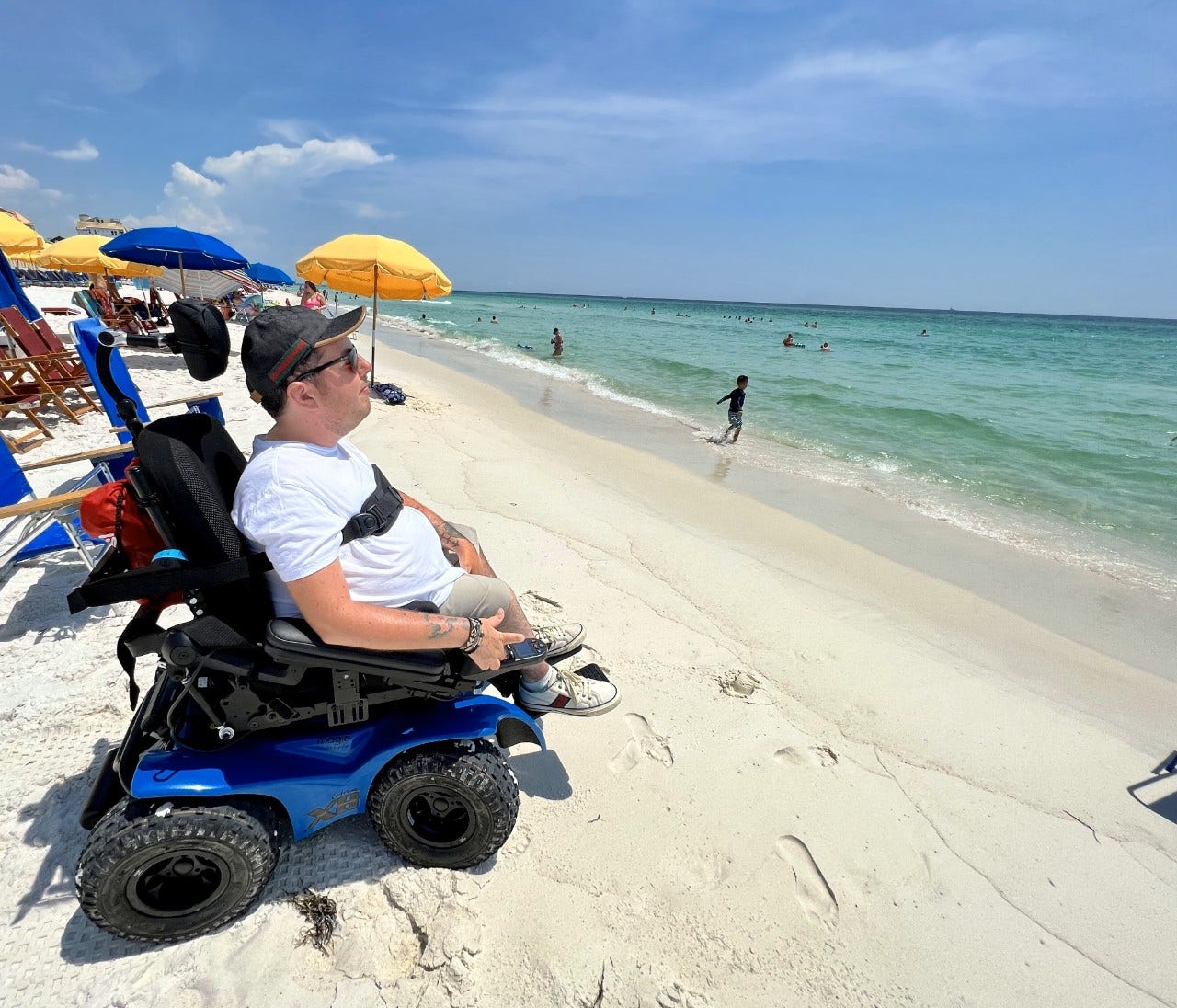When you arrive at the gate (where you’ll board your flight), request to speak to a ground crew member that will be handling your chair. This will give you the opportunity to explain how to push your chair underneath the plane and how to lock it into place.
Once your ticket has been scanned and you wheel yourself down to the the plane door, the airport staff will assist you with transferring from your wheelchair into the aisle chair, so that you can safely board the plane. Since I cannot self-transfer at all, I choose to have underneath me a transfer sling with handles that the staff can easily lift and maneuver me from my chair to the aisle chair with. I use the AbleSling Lite, but there are also other great slings such as the Perfect Lift if you are unable to assist with transfers.
As the staff is transferring me, my companion is removing all removable parts from my wheelchair and placing them in a carry-on bag. These parts include my knee pads and my headrest. Since my joystick cannot easily be removed, we always wrap it with bubble wrap and then place a plastic bag over it and secure it with masking tape. We have tried other tapes, but the masking tape works best, as it can be ripped and removed easily once the chair is returned to me after the flight.
We also grab my wheelchair cushion and place it in my seat on the plane. This helps me to be more comfortable during the flight and since my cushion has air pockets in it, it helps to prevent pressure sores during long flights.
Be aware that most airlines no longer use straws, so if this is needed during the flight for you to enjoy your beverage, pack your own in your carry-on bag. It’s important to think about what makes your everyday life easier and more accessible, and then think of ways than you can implement that onboard the plane.








